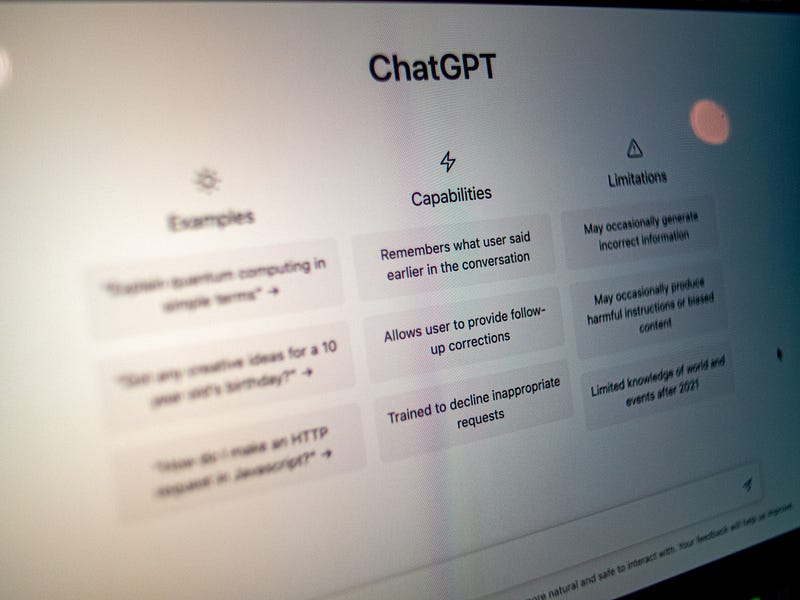Exploring Copyright in the Age of AI-Generated Works
Written on
Chapter 1: The Complicated Landscape of AI Copyright
Can we truly claim copyright over creations birthed by artificial intelligence? The U.S. Copyright Office grapples with this intricate issue, acknowledging that the answer is not straightforward.

“Generative AI” technologies prompt significant inquiries about copyright protection for their outputs and whether hybrid works, combining human creativity and AI generation, can be registered.
On March 16, 2023, a noteworthy document emerged from the typically mundane communications of the U.S. Copyright Office, diving into the practical applications of AI in creative fields. The central question was whether one could copyright material created by a computer.
To illustrate, consider Ammaar Reshi, who produced a book titled Alice and Sparkle using illustrations generated by the AI art tool Midjourney and narrative prompts from ChatGPT. The question remains: can he claim copyright over this work?
While it may seem straightforward, the reality is far more complex. The advent of AI challenges conventional notions of authorship. The Office states, “These are no longer hypothetical questions, as the Office is already receiving and examining applications for registration that claim copyright in AI-generated material.” As they sift through approximately half a million applications each year, new trends have emerged, necessitating updates to application requirements.
The Office’s investigation into the current applications and relevant case law sheds light on what can and cannot be copyrighted in the realm of AI.
This video discusses the recent rules issued by the U.S. Copyright Office concerning generative AI and its implications for copyright protection.
Section 1.1: The Human Element in Copyright
The fundamental criterion for copyright eligibility revolves around human involvement in the creative process. In 2018, the Office rejected a copyright application for the AI-generated artwork A Recent Entrance to Paradise due to the absence of human authorship, stating, “The work could not be registered because it was made ‘without any creative contribution from a human actor.’”
In contrast, a comic titled Zarya of the Dawn, submitted in February 2023, featured both human-authored content and AI-generated images. While the human-authored sections were copyrightable, the Office concluded that individual images created by AI could not be registered.
The key takeaway from these examples is that the Office assesses the extent of human contribution when determining copyright eligibility.
Subsection 1.1.1: Clarifying Authorship
The U.S. Copyright Office employs a “via negativa” approach—defining what does not qualify for copyright to clarify what does. They emphasize that the term “author,” as referenced in the Constitution and the Copyright Act, explicitly excludes non-human entities.
For instance, a notable case involved a monkey that was denied copyright for a photo it captured. The Court's reasoning hinged on the language of the Copyright Act, which refers to an author’s “widow,” “widower,” and “grandchildren”—terms that do not apply to animals. Additionally, a case involving a “spirit” seeking copyright protection was dismissed, as the court ruled that only works involving human selection and arrangement are eligible.
Interestingly, in Burrow-Giles Lithographic Co. v. Sarony, the court ruled in favor of a photographer who claimed copyright over machine-generated images, asserting that the “author” was indeed the person who utilized the machine for creative expression.
Section 1.2: The Intersection of AI and Human Creativity
When it comes to works that blend human creativity and AI-generated content, the Office recognizes that determining authorship can be intricate. They evaluate whether the AI merely assisted in the creative process or whether it executed the essential elements of authorship independently.
They consider whether the contributions of AI are the result of “mechanical reproduction” or if they stem from the author’s “own original mental conception.” Simply inputting a prompt into an AI tool is akin to commissioning an artist, suggesting that the technology, rather than the user, is the creator.
However, this does not negate the potential for human involvement. If an individual creatively arranges AI-generated material, this can signify authorship. The Office clarifies that traditional tools like Adobe Photoshop do not fall under the same scrutiny since they require human creative control.

Photo by Emiliano Vittoriosi on Unsplash
Chapter 2: Future Implications for Creators
The U.S. Copyright Office's recent communication addresses the pressing question: what delineates human authorship from AI-generated content? This query will grow in significance as AI tools become more prevalent in creative fields.
While the distinction may never be perfectly clear, it is essential to recognize that human ingenuity remains integral to the process. The Office's thoughtful, case-by-case approach offers a framework for navigating these complex issues.
To further explore these evolving legal landscapes, please consider subscribing to my mailing list. Joining Medium also grants you access to a wealth of insights from fellow writers. Your support helps further my research endeavors in copyright and technology.
This video delves into whether AI-generated books and graphic designs can be copyrighted, providing a deeper understanding of the current legal landscape.